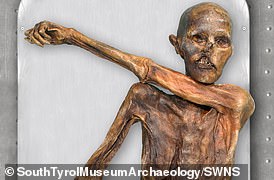The real-life Encino Man? As an extinct worm is reawakened after 46,000 years, experts reveal whether frozen HUMANS could ever be brought back to life
In the 1992 blockbuster Encino Man, two high school students discover a frozen caveman in their yard, before thawing him out and introducing him to modern life.
Now the bizarre plot has come true – with a 46,000-year-old frozen worm.
In In a groundbreaking study published last month, experts managed to resurrect a group of long-extinct roundworms after thawing the ice that had trapped them since the era of the woolly mammoths.
While these worms underwent hibernation impossible for humans, their resurgence raises a frightening prospect: Will we soon have an ‘Encino Man’ of our own?
With hundreds of corpses frozen in laboratories around the world, one cryonics expert thinks it could be as long as 50 years before technology allows them to walk among us again.
In the 1992 blockbuster Encino Man, two high school students discover a frozen caveman in their yard, before thawing him out and introducing him to modern life.
Valeriya Udalova is the CEO of KrioRus, which claims to house 94 frozen corpses at its cryopreservation base in the Russian capital.

Humans cannot go into a hibernation-like state, which poses a major challenge for cryonicists
Most of the bodies belong to Russian nationals, although nearly a third are from various countries around the world, including Britain, France and the US.
While many choose to freeze their entire bodies for $46,000 ($36,273), others have opted to keep just their brains or heads for a cheaper $11,000 ($8,674) deal.
These have been in the giant chambers of the lab since the early 2000s, as scientists await technological advances that will one day bring them back to life – just like the roundworms.
Research last month found that the long-extinct Panagrolaimus kolymaensis underwent a dormant state known as “anabiosis,” in which the body shuts down until bodily processes are completely unobservable.
This trait allowed the ancient worms to survive winter after winter amid the harsh Siberian temperatures.
But unlike these prehistoric wrigglers, humans cannot go into a hibernation-like state, posing a major challenge for cryonicists.
‘Many animals can get anabiosis, some can freeze and thaw. For example worms, frogs and Siberian anglerfish,” Ms Udalova told MailOnline.
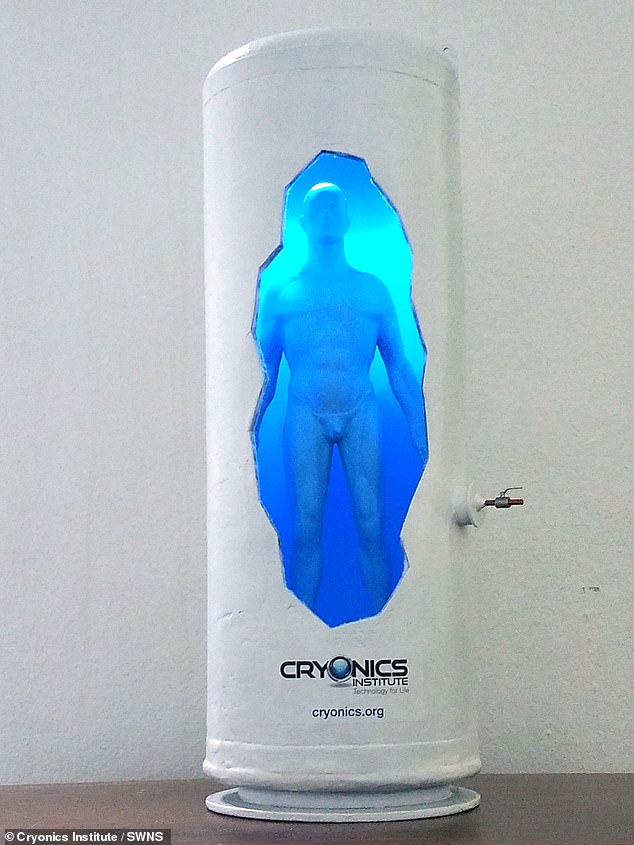
Cryopreservation refers to freezing a body down to -196°C (-321°F) – the point of liquid nitrogen
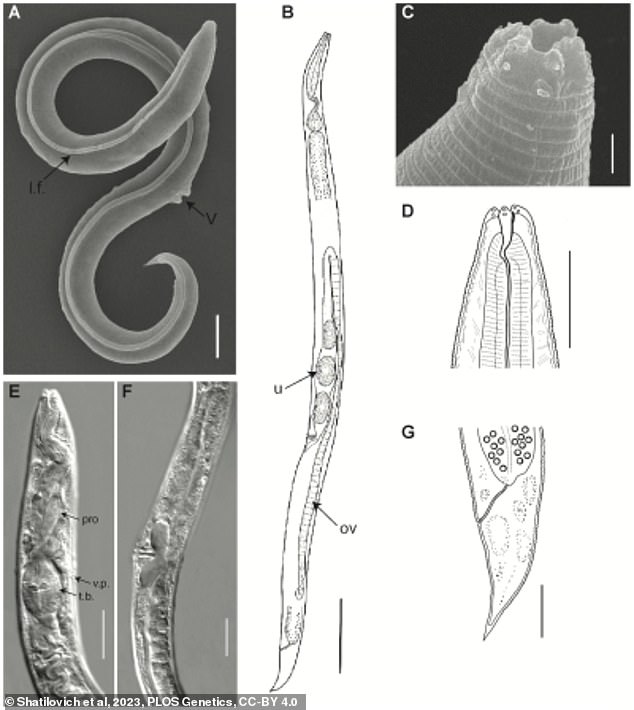
Last month, experts managed to resurrect the group of long-extinct roundworms after thawing the ice that had trapped them since the era of the woolly mammoths.
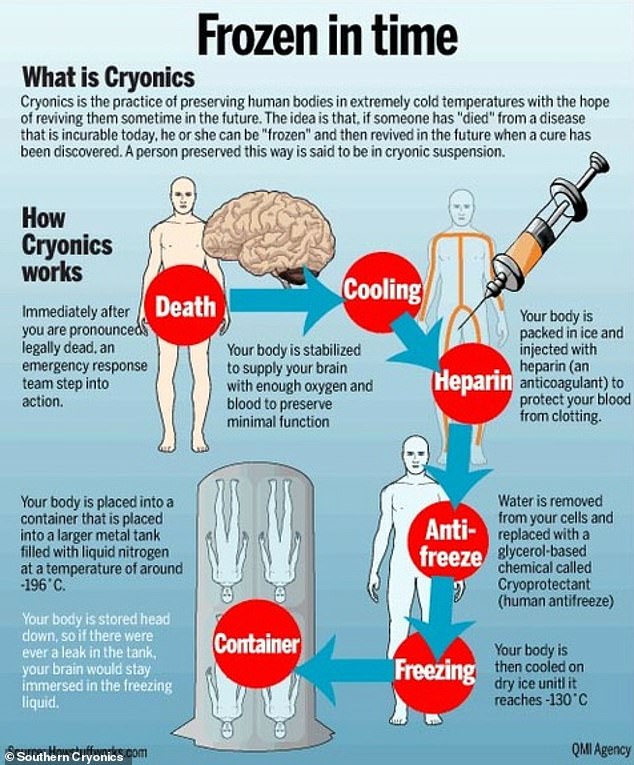
Cryon preservation is the freezing of a body to -196°C (-321°F). Antifreeze is injected into the corpse to prevent cells from being damaged
But people aren’t like that. For example, frogs have a lot of glycerol in their bodies and we don’t.
‘I don’t think human metabolism can be radically restructured so that we end up in anabiosis like animals. It’s probably easier to create new, artificial bodies.’
The crypto reserve of humans takes a very different approach as a result of these stark differences.
KrioRus first performs a surgical procedure to drain a human’s blood before connecting his body to a new circulatory system that is pumped with ‘cryoprotective solutions’.
In general, these refer to antifreeze chemicals such as ethylene glycol, which are often used to protect intact cells and tissues in other areas of scientific research.
Meanwhile, the bodies are cooled to a final peak of -196°C (-321°F) and remain in chambers until new technology emerges.
But this is far from simple, as the very chemicals used to preserve these bodies can also be toxic with prolonged exposure.
The eventual cooling of frozen organs can also result in life-threatening fractures if the rate of melting is not consistent throughout the body.
Bringing frozen bodies back to life would require massive advances in tissue engineering and medicine, which many believe is a distant reality and even a “false hope.”
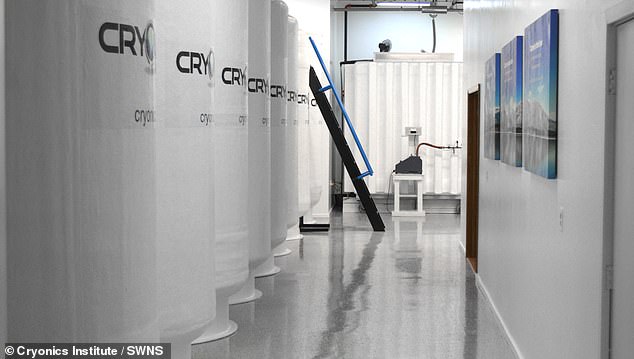
Dennis Kowalski, president of the US-based Cyronics Institute, believes it could take “hundreds of years” for frozen people to come back to life
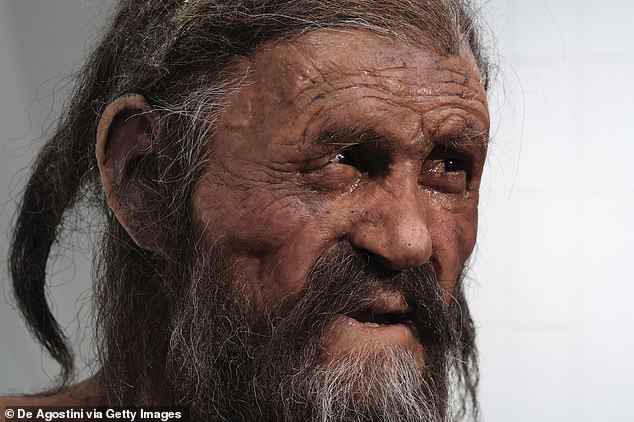
Pictured: A replica of Ötzi, the iceman discovered in the Italian Alps in 1991
But Ms. Udalova boldly claims that technology like this could emerge within the next 50 to 70 years, despite the chronic underfunding of cryonics.
She does not deny that cavemen could be involved in this, after the discovery of Ötzi, the iceman in the Italian Alps in 1991.
“The rapid development of the cryobiology of large objects – organs and animals – is hampered by the extremely low funding of this branch of science,” she continued.
‘There are few cryobiology laboratories, there are no large ones at all. Even the famous laboratory “XXI Century Medicine” is a small organization.
‘But even in such a deplorable situation, remarkable experiments have already been done, for example with reversible cryopreservation of a rat kidney by means of gas persufflation with nanoparticles and induction heating.’
Meanwhile, Dennis Kowalski, president of the US-based Cyronics Institute, believes it could take “hundreds of years” for frozen people to come back to life.
Its cryopreservation base in Michigan is home to 243 patients and nearly the same number of pets, while 2,000 others have signed up to participate.
“We suspect that advances in stem cell tissue regeneration, AI, genetics and nanorobotics will all push the boundaries of what is very difficult to do today, into the routine of the future,” he told MailOnline.
“We see ongoing evidence of this, but take this progress for granted. CPR with defibrillation and organ transplants were once considered impossible or even shunned, but today these technologies routinely save lives.
“It’s probably the bridge of time or an ambulance ride to a future hospital.
‘It may take hundreds of years, but with our litigation and endowment funding we have time to wait and see what is possible.’

